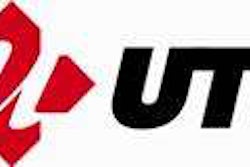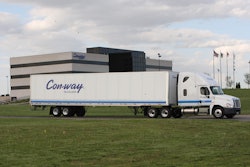At the Mackinac Policy Conference on Thursday, June 2, Chip McClure, chairman, chief executive officer and president of Meritor Inc., helped lead a panel discussion titled “Improving Michigan’s Economic Environment: Lessons from Business Leaders.” McClure was joined by Dick Dauch, co-founder, chairman and CEO of American Axle & Manufacturing, and Michael Duggan, president and CEO of Detroit Medical Center.
The three CEOs spoke about how their three diverse companies prepared for risk, opportunity and change, and survived “Stage 4” as they implemented turnaround strategies of reducing costs and altering their core competencies to emerge successfully from a down economy.
In 2009 at the height of the recession, the commercial vehicle market dropped by 50 percent in North America and 74 percent in Europe, requiring fast adaptive actions by suppliers. “The key to surviving a major downturn is preparation,” McClure says. “We operate in a cyclical industry and have to not only be prepared for downturns, but be aware of signs that things could be aggravated by economic crisis. We actually began our cost and debt reduction strategy in 2006 before the worst of the crisis hit.”
Through an intense restructuring process that focused the company on its core competencies in the commercial truck market, Meritor recovered from an all-time low stock price of $0.32 in March 2009 to $16.49 in May 2011. The process included shedding their light vehicle assets, cost reductions, restructuring debt and stabilizing and improving working capital performance.
The global meltdown in 2009 and resulting implosion in vehicle sales pressured everyone in the supply sector, and more than half of the top U.S. automotive suppliers faced bankruptcy. AAM, which avoided bankruptcy and is now the 19th largest automotive supplier in North America, attributed the company’s survival to its ability to adapt to change and drive performance.
By completing its restructuring efforts outside of bankruptcy, AAM was able to preserve a substantial amount of enterprise value for many key stakeholders. “In 2008 and 2009, the entire auto industry was being reset,” Dauch says. “AAM’s ‘Resize, Restructure and Recovery’ business plan triggered a series of extremely difficult but necessary actions targeted at returning AAM to market cost-competitiveness, viability, profitability and sustainability.”











